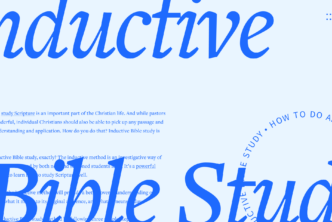Last week we examined five of the most common mistakes made when studying the Bible. Today, we’re going to cover five more.
5. Missing the historical setting
Contrary to popular belief, the Bible was not written to twenty-first century Americans. Each book of the Bible was written by a specific person, to a specific group of people, in a specific culture, at a specific time, and for a specific purpose. If we miss these details, we are likely to misunderstand much of what we are reading. The Faithlife Study Bible includes much of this information in the introductions to books of the Bible. For even greater detail, I would recommend adding the IVP Bible Background Commentary: New Testament (and Old Testament) to your FSB.
4. Assuming modern definitions of biblical words
Very few Greek or Hebrew words have an exact English equivalent. So we have to remember that the English words in a translation may not mean exactly the same thing as the original Greek or Hebrew. One way to get around this obstacle is to do a word study, examining every occurrence of a particular word in the Bible to see how it is used therein. However, this method is time consuming. A quicker way is to use a tool such as Vine’s Complete Expository Dictionary of Old and New Testament Words. This dictionary is a collection of such studies on almost every major word in the Bible. It makes it easy to understand what a given word actually means when used in the Bible. Add it to your FSB for easy referencing.
3. Failing to understand the genre
The Bible is made up of 66 different books, and they include many different genres of literature. There are epistles and narratives, poems and parables, instances of wisdom literature and apocalyptic literature, and a host of other specific styles. Keeping them all straight can be confusing, but it’s a vital part of understanding what we read. Thankfully, there are tools to help us here as well. One great resource to add to your FSB is How to Read the Bible Book by Book. It provides an overview for each book of the Bible—including the genre—along with a number of other important details.
2. Ignoring biblical context
All too often, we read the Bible as if it were a collection of unconnected verses. A single verse taken by itself can appear to mean something totally contrary to the author’s intent. We wouldn’t skip to a sentence in the middle of Moby Dick and expect it to make sense, so why do we do this with the Bible? One good example is Jeremiah 29:11. This verse is frequently claimed as a promise for God’s specific blessing on an individual. But when we look at the context, we see that God was talking to the Israelites, whom he had sent into exile for their sins. Only after being in exile for 70 years would God bring them back to prosperity. Those are “the plans I have for you” according to Jeremiah’s full context.
1. Studying for the wrong reasons
It is easy to view Bible study as an intellectual exercise. But acquiring information about the Bible is not a proper end in itself. Paul described the purpose of Scripture: “that the man of God may be complete, equipped for every good work” (2 Timothy 3:17). If our studies do not equip us for good works, then they are unprofitable studies. As we read the Bible, our goal must be to ultimately apply it to our lives.
These mistakes are easy to make, but they can be avoided. Let’s all continue studying Scripture together, and continue living it out every day.
* * *
Serious Bible study is easier with serious Bible study software. The Faithlife Study Bible is a great place to start, but if you’d like to study in greater detail, Logos is for you. Its powerful, intuitive tools and vast libraries are the perfect way to expand your understanding of the Scriptures. Visit Logos.com/Logos5 to learn more.





